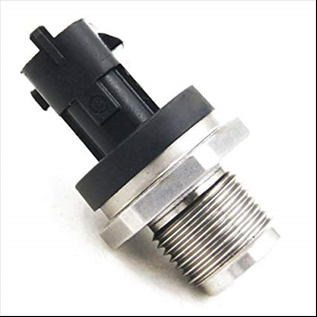Jak se závada projevuje
Zvuky / vibrace. Random and irregular engine noise with random "stumble" and misfires after a cold start. Symptoms appear for only 2 minutes at idle and then disappear completely. Symptoms disappear after 4 to 5 restarts and come back after a cold restart.
Jak často se závada projevuje
-
Sporadicky / za specifických podmínek.
V jakém systému se závada vyskytuje
- neukládá žádný chybový kód
Doposud provedeno bez úspěchu
The car was purchased with this fault. The first owner drove the car with this fault for some time and didn't make any attempt to have the fault repaired. The new owner wanted to fix the problem straight away and placed the car in a workshop. This workshop: measured the fuel overflow value from the individual fuel injectors - OK. Based on an unstable rail fuel pressure (about +/- 20 Bar) the fuel pressure regulating valve was replaced with a new one - no change. The EGR valve was blocked off - no change. The fuel injectors were sent for flow bench testing - OK, even though some parameters were close to their limit values. After the fuel injectors were reinstalled a LOG recording was performed. Another LOG recording was performed with the fuel injectors swapped among cylinders. The workshop fixing the car indicated that the problem transferred with the swapped injectors, but was not quite sure. Under these conditions and with this information the car arrived in my workshop and I was asked to determine which fuel injector(s) were defective. I agreed with this since the diagnostic procedure to determine the defective injector(s) is simple. Uneven performance of any cylinder can be determined from the alternators charging current. The first problem that I ran into was that the alternator was unusable because the regulating cycles distorted the measured values to an extent that they could not be used. Because I could hear quite a strong knocking noise I focused on the noise and used piezo sensors. The first two one minute recordings were quite clear and indicated that cylinders 1 and 2 are not OK. After swapping injectors 1-4 and 2-3 the following two recordings indicated that the problem moved with the injectors. I was very busy at that time and had to do other work. Later, when I had time to make a detailed evaluation of the LOG recordings I discovered that all the cylinders have a problem and some are more evident. Since I lost confidence about all the recordings over the time that I wasn't working on the car I decided to delete all the previous recordings and start from the beginning properly. Together with the swapped fuel injectors I gradually made 5 LOG recordings of cold engine starts that were about 1.5 minutes long. From these it was becoming clear that the problem is on all cylinders, that every recording is slightly different but the frequency on all 5 recordings was comparable. One of these LOG recordings is attached (recording 1). At this point, I was lucky when I moved one of the piezo sensors to a more stable part of the engine with the intent to make a few more recordings with the glow plugs disconnected. At first, I didn't even realize what's going on apart from the fact that the problem completely disappeared. When I reconnected the glow plugs the problem returned immediately. At this point, I recollected the slightly unstable rail pressure. Initially, I didn't pay too much attention and it didn't strike me since I was convinced that a DTC would be set if the fluctuating rail pressure was an issue and +/- 20 Bar shouldn't cause any problems. Now the next LOG recording was with current clamps on the fuel injector for synchronization, fuel injector voltage (read all fuel injectors), rail pressure and current clamps on the glow plugs. This recording was the key recording that I, unfortunately, deleted by mistake. The attached recording 2 is a replacement file so that I can describe the problem. If the fuel pressure drop on the sensor "coincides" with a timeframe window of about 0.5 - 2ms before fuel injection then a defective fuel injection occurred. In measurement 2 I suspended that the problem is caused by the sensors power supply. I installed an electrolytic 470uF capacitor on to the signal wire and the problem was solved. Another test was with a 100k potentiometer to find out if the source of the problem is the power supply or the engine ECU. The sensor can withstand a 4mA short and the 100k potentiometer is much softer and if the noise disappears offender is clear. From recording 3 it is clear that the engine ECU is not the cause. The next measurement was done without the engine running and all that was required was to activate the preheating system with an actuator test. Recording 4 is with the original sensor and recording 5 is with a new sensor connected only electrically. I didn't pay attention to the minor changes of the preheating current draw and everything was reinstalled and verified during a test drive and all OK.
Pro více informací je potřeba se zaregistrovat
Zaregistrovat se
Už jste registrovaný?
Přihlásit se




